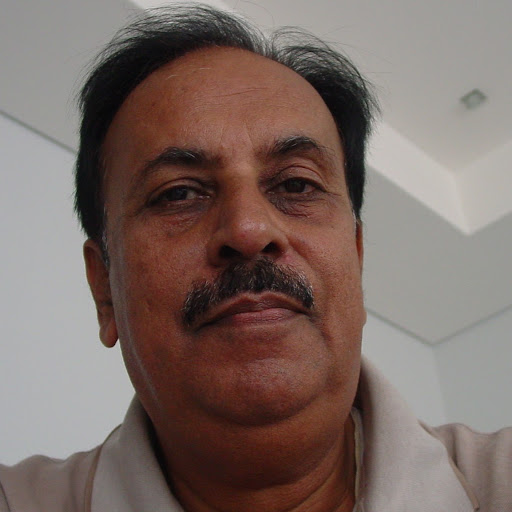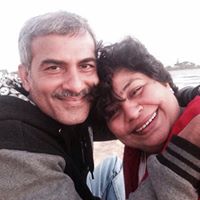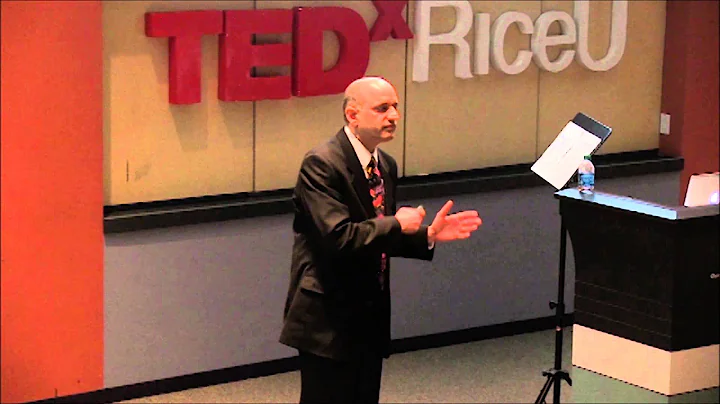Rajiv D Pandya
age ~63
from Atlanta, GA
- Also known as:
-
- Rajiv Dr Pandya
- Raj Pandya
- Rajiv D Randya
- Raj Pardya
- Raj Pandyaatla R
- Phone and address:
-
3200 Downwood Cir, Atlanta, GA 30327
(404)3524500
Rajiv Pandya Phones & Addresses
- 3200 Downwood Cir, Atlanta, GA 30327 • (404)3524500 • (404)3524779
- Sandy Springs, GA
- Hilton Head Island, SC
- McDonough, GA
- Stockbridge, GA
- Lawrenceville, GA
Work
-
Address:3200 Downwood Cir Nw, Atlanta, GA 30327
-
Specialities:Orthopedic Surgeon
Education
-
School / High School:University of North Carolina, School of Medicine - Doctor of Medicine
Ranks
-
Certificate:American Board of Orthopaedic Surgery Certification in Orthopaedic Surgery
Medicine Doctors

Rajiv D. Pandya
view sourceSpecialties:
Orthopaedic Surgery
Work:
Atlanta Orthopedic Institute
1035 Southcrest Dr STE 100, Stockbridge, GA 30281
(770)3899005 (phone), (770)3895251 (fax)
Atlanta Knee & Shoulder Clinic
3200 Downwood Cir NW STE 410, Atlanta, GA 30327
(404)3524779 (phone), (404)3510551 (fax)
1035 Southcrest Dr STE 100, Stockbridge, GA 30281
(770)3899005 (phone), (770)3895251 (fax)
Atlanta Knee & Shoulder Clinic
3200 Downwood Cir NW STE 410, Atlanta, GA 30327
(404)3524779 (phone), (404)3510551 (fax)
Education:
Medical School
University of North Carolina School of Medicine at Chapel Hill
Graduated: 1987
University of North Carolina School of Medicine at Chapel Hill
Graduated: 1987
Procedures:
Arthrocentesis
Carpal Tunnel Decompression
Joint Arthroscopy
Knee Arthroscopy
Knee Replacement
Lower Arm/Elbow/Wrist Fractures and Dislocations
Lower Leg/Ankle Fractures and Dislocations
Shoulder Arthroscopy
Shoulder Surgery
Carpal Tunnel Decompression
Joint Arthroscopy
Knee Arthroscopy
Knee Replacement
Lower Arm/Elbow/Wrist Fractures and Dislocations
Lower Leg/Ankle Fractures and Dislocations
Shoulder Arthroscopy
Shoulder Surgery
Conditions:
Fractures, Dislocations, Derangement, and Sprains
Hallux Valgus
Internal Derangement of Knee
Internal Derangement of Knee Cartilage
Intervertebral Disc Degeneration
Hallux Valgus
Internal Derangement of Knee
Internal Derangement of Knee Cartilage
Intervertebral Disc Degeneration
Languages:
English
Spanish
Spanish
Description:
Dr. Pandya graduated from the University of North Carolina School of Medicine at Chapel Hill in 1987. He works in Atlanta, GA and 1 other location and specializes in Orthopaedic Surgery. Dr. Pandya is affiliated with Southern Regional Medical Center.

Rajiv Pandya, Atlanta GA
view sourceSpecialties:
Orthopaedic Surgery
Sports Medicine
Surgery
Sports Medicine
Sports Medicine
Surgery
Sports Medicine
Work:
Atlanta Knee & Shoulder Clinic
3200 Downwood Cir NW, Atlanta, GA 30327
Atlanta Knee & Shoulder Clinic
1035 Southcrest Dr, Stockbridge, GA 30281
3200 Downwood Cir NW, Atlanta, GA 30327
Atlanta Knee & Shoulder Clinic
1035 Southcrest Dr, Stockbridge, GA 30281
Education:
University of North Carolina (1987)

Rajiv D Pandya, Atlanta GA
view sourceSpecialties:
Orthopedic Surgeon
Address:
3200 Downwood Cir Nw, Atlanta, GA 30327
1035 Southcrest Dr, Stockbridge, GA 30281
1035 Southcrest Dr, Stockbridge, GA 30281
Education:
University of North Carolina, School of Medicine - Doctor of Medicine
St. Vincent's Birmingham - Fellowship - Sports Medicine
St. Vincent's Birmingham - Fellowship - Sports Medicine
Board certifications:
American Board of Orthopaedic Surgery Certification in Orthopaedic Surgery
Name / Title
Company / Classification
Phones & Addresses
Pandya, Rajiv D Md
Physicians & Surgeons - Sports Medicine
Physicians & Surgeons - Sports Medicine
3200 Downwood Cir NW #410, Atlanta, GA 30327
(404)3524500
(404)3524500
President
Atlanta Knee & Shoulder Clinic
Osteopathic Physician's Office Medical Doctor's Office · Orthopedics · Knee Doctor · Shoulder Doctor · Spine Doctor · Physical Medicine · Physical Therapist · Rheumatology
Osteopathic Physician's Office Medical Doctor's Office · Orthopedics · Knee Doctor · Shoulder Doctor · Spine Doctor · Physical Medicine · Physical Therapist · Rheumatology
1035 Southcrest Dr, Stockbridge, GA 30281
(770)3899005
(770)3899005
Pandya, Rajiv D Md
Physicians & Surgeons - Sports Medicine
Physicians & Surgeons - Sports Medicine
3200 Downwood Cir NW #410, Atlanta, GA 30327
(404)3524500
(404)3524500
Medical Doctor, Surgery-Orthopedic
Atlanta Knee & Shoulder Clinic, Inc
Orthopedic Physician · Orthopedics · Knee Doctor
Orthopedic Physician · Orthopedics · Knee Doctor
3200 Downwood Cir NW, Atlanta, GA 30327
(404)3524500, (404)3510551, (404)3524779, (404)3500722
(404)3524500, (404)3510551, (404)3524779, (404)3500722
Us Patents
-
Methods For Analyzing Job Functions And Job Candidates And For Determining Their Co-Suitability
view source -
US Patent:8219433, Jul 10, 2012
-
Filed:May 12, 2008
-
Appl. No.:12/119228
-
Inventors:Rajiv D. Pandya - Atlanta GA, US
-
International Classification:G06Q 10/00
-
US Classification:705 714, 705 721
-
Abstract:A method and system for conducting an elemental analysis of a job's functions and requirements, conducting a medical diagnosis of a worker to determine the physical capabilities and limitations of the worker, and comparing the elemental analysis and the medical diagnosis to determine whether the worker can function in a particular job be it the current job, another existing job or a modification of either.
-
Method For Drilling Enlarged Sections Of Angled Osteal Tunnels
view source -
US Patent:8361079, Jan 29, 2013
-
Filed:Feb 15, 2010
-
Appl. No.:12/705686
-
Inventors:Rajiv D. Pandya - Atlanta GA, US
-
International Classification:A61B 17/00
-
US Classification:606 96, 606 80, 606 98
-
Abstract:Methods for drilling enlarged osteal tunnels using osteal guides capable of drilling an angled osteal tunnel, namely, an osteal tunnel having an angle or turn within the bone and for drawing a muscle, tendon or ligament in need of repair into the enlarged osteal tunnel such that the bone can mend about, around, over and/or within the muscle, tendon or ligament. A reamer and guide wire can be used to create the enlarged osteal tunnel to accommodate a portion of the muscle, tendon or ligament in need of repair. The device allows for the blind intraosseous preparation of osteal tunnels and the blind intraosseous retrieval of sutures from such osteal tunnels.
-
Methods For Analyzing Job Functions And Job Candidates And For Determining Their Co-Suitability
view source -
US Patent:8423393, Apr 16, 2013
-
Filed:Apr 26, 2012
-
Appl. No.:13/456609
-
Inventors:Rajiv D Pandya - Atlanta GA, US
-
International Classification:G06Q 10/00
-
US Classification:705 714, 705 721
-
Abstract:A method and system for conducting an elemental analysis of a job's functions and requirements, conducting a medical diagnosis of a worker to determine the physical capabilities and limitations of the worker, and comparing the elemental analysis and the medical diagnosis to determine whether the worker can function in a particular job be it the current job, another existing job or a modification of either.
-
Device For The Intraosteal Seizing Of Sutures
view source -
US Patent:8551123, Oct 8, 2013
-
Filed:Nov 13, 2008
-
Appl. No.:12/270513
-
Inventors:Rajiv D. Pandya - Atlanta GA, US
-
International Classification:A61B 17/04
-
US Classification:606148, 606 96
-
Abstract:Devices for seizing sutures within osteal tunnels, including blindly seizing such sutures, having an interior end for insertion into an osteal tunnel, the interior end having a suture seizing mechanism; an exterior end having an activating mechanism for activating the suture seizing mechanism; a target ring, which is a component of the suture seizing mechanism, having an opening through which a suture to be seized can pass through; and a suture clamping component, which is a component of the suture seizing mechanism, for clamping the suture to be seized against a surface of the target ring.
-
Method For Drilling Angled Osteal Tunnels
view source -
US Patent:8579974, Nov 12, 2013
-
Filed:Nov 13, 2008
-
Appl. No.:12/270506
-
Inventors:Rajiv D. Pandya - Atlanta GA, US
-
International Classification:A61F 2/08
-
US Classification:623 1314, 623 1312, 623 1313, 623 1315
-
Abstract:Methods for drilling an angled osteal tunnel into a bone by drilling or punching at least one first tunnel portion into the bone from a first surface location on the bone, the at least one first tunnel portion having an interior end within the bone and then drilling or punching at least one second tunnel portion into the bone from a second surface location on the bone using a guide component to guide a drill to the interior end of the first tunnel portion, whereby the at least one first tunnel portion and the at least one second tunnel portion intersect and connect at an angle, resulting in an angled osteal tunnel.
-
Device For Drilling Angled Osteal Tunnels
view source -
US Patent:20100121337, May 13, 2010
-
Filed:Nov 13, 2008
-
Appl. No.:12/270492
-
Inventors:Rajiv D. Pandya - Atlanta GA, US
-
International Classification:A61B 17/58
-
US Classification:606 96
-
Abstract:A surgical drill guide device for drilling an angled osteal tunnel having an support rack having a first end and a second end; a drill guide sleeve having a passage for receiving a drill therethrough, the drill guide sleeve being adjustably securable and positionable on the rack between the first end and the second end of the rack; and a guide component secured on the first end of said rack, the guide component having a suture seizing mechanism for seizing a suture.
-
Suture Anchoring System And Method
view source -
US Patent:20100121375, May 13, 2010
-
Filed:Nov 13, 2008
-
Appl. No.:12/270525
-
Inventors:Rajiv D. Pandya - Atlanta GA, US
-
International Classification:A61B 17/04
A61B 19/00 -
US Classification:606232, 128898
-
Abstract:A suture anchoring system having an anchor structure through which at least one suture can extend, the anchor being compressible or deformable to anchor the suture, and a method for using the suture anchoring system by attaching one end of a suture to a muscle, ligament or bone; threading the suture through an osteal tunnel; providing a surgical anchor comprising a cuff of deformable material suitably shaped to receive a suture, wherein said cuff, when compressed, tightly grips a suture and forms a point of support, whereby said deformed anchor prevents a suture from being pulled through a drilled osteal tunnel; threading the other end of the suture through the anchor; and deforming said anchor tightly about the suture to form a point of support.
-
Computerized Injury Management Process
view source -
US Patent:20120226113, Sep 6, 2012
-
Filed:May 11, 2012
-
Appl. No.:13/469523
-
Inventors:Rajiv D. Pandya - Atlanta GA, US
-
International Classification:A61B 5/11
A61B 5/00 -
US Classification:600301, 600300
-
Abstract:A method for aiding a physician in examining, diagnosing and treating an injured patient has the steps of creating a computer database that converts a selected injured body part to a sorted group of one or more preliminary diagnoses with examination protocols for each preliminary diagnosis; conducting recommended examination protocols and inputting examination results to the computer database to narrow diagnosis to most likely diagnosis; selecting a recommended diagnosis; creating a computer database of treatment protocols for every computer generated injury diagnosis, the treatment protocols having usage data and outcome data; selecting a treatment protocol; initiating treatment; and inputting treatment outcome results back into the computer database for statistical inclusion into the computer database.
Plaxo

Rajiv PANDYA
view sourcemelbourneservice support at Johnson & Johnson
Googleplus

Rajiv Pandya
Work:
Pokémon

Rajiv Pandya
Work:
Mr. Tapan Shah - Pursuing Company Secretaryship

Rajiv Pandya

Rajiv Pandya

Rajiv Pandya

Rajiv Pandya

Rajiv Pandya

Rajiv Pandya
Youtube
Myspace

Rajiv Pandya
view source
Rajiv Pandya
view source
Rajiv Balmukund Pandya Pa...
view source
Rajiv Pandya
view source
Rajiv Pandya
view source
Rajiv Pandya
view source
Rajiv Pandya
view source
Rajiv Pandya
view sourceGet Report for Rajiv D Pandya from Atlanta, GA, age ~63





